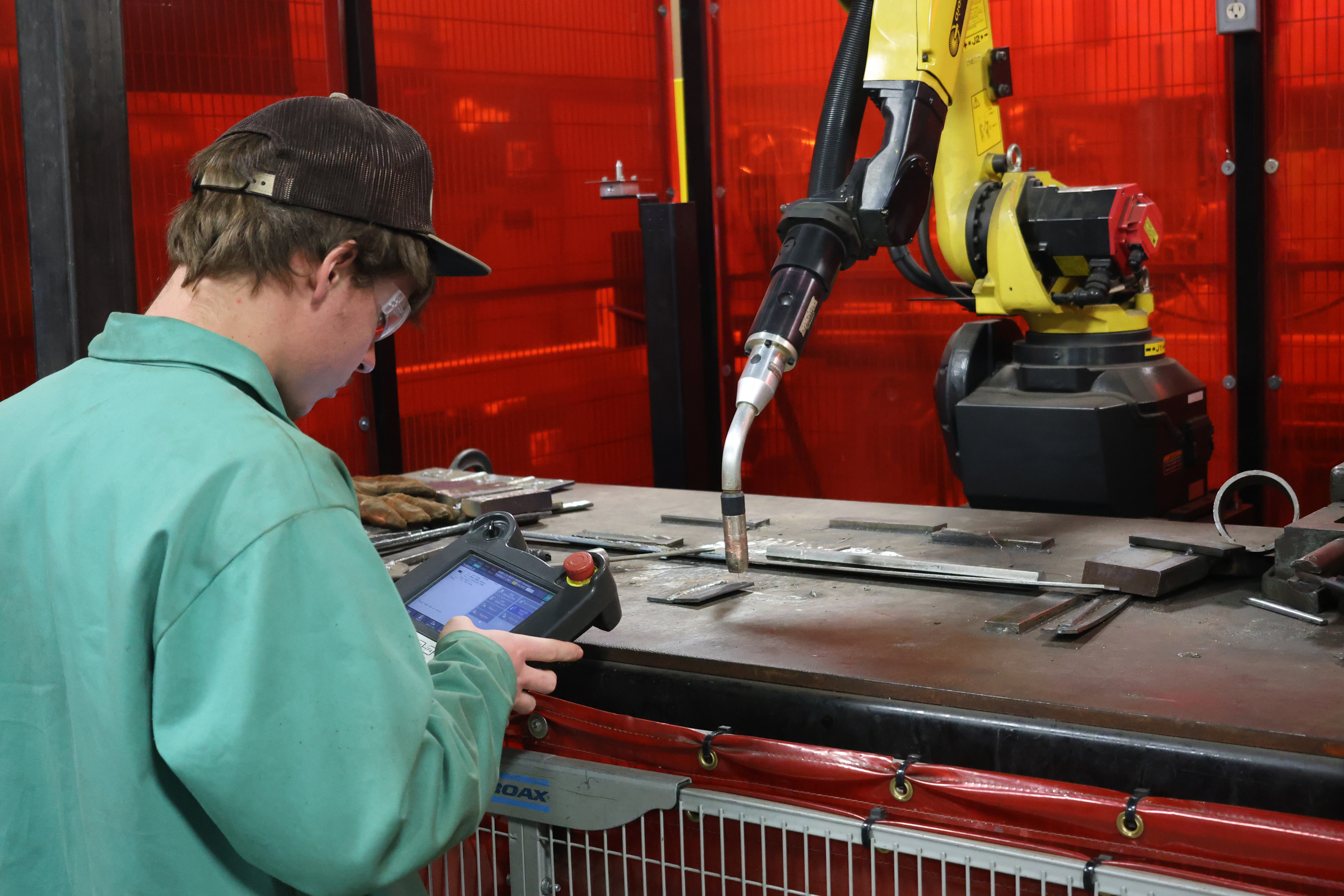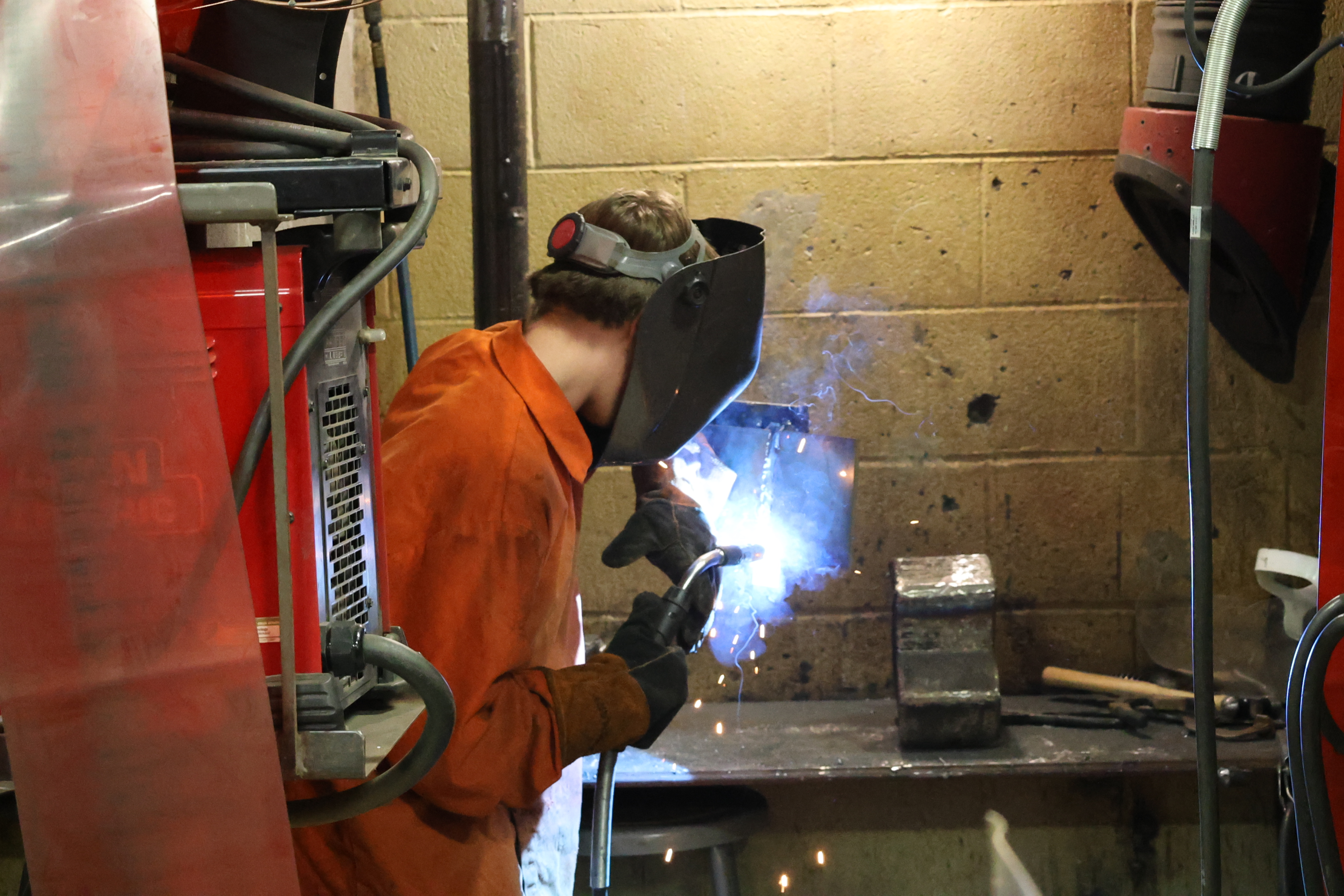Welding
Instructors | College Credits | Available Certifications | Lab Fees |
|---|---|---|---|
Brian Myers Michael Crilley | Stark State College |
|
|



Use advanced welding techniques to design, build, and troubleshoot complex manufacturing solutions
Make, cut, and repair various types of metals utilizing different types of welds
Interpret project blueprints and specifications while applying an extensive knowledge of materials
What can I do when I graduate? | What would I do in this class? | What can I do with further training? |
|
|
|
Welding students must be able to
Demonstrate shop and eye safety at all times
Exhibit professionalism & workplace ethics
Develop welding competencies and apply learned theory and technical information to prepare for a career in the welding industry
Perform the job in both hot and cold conditions
Handle getting dirty as part of the job
Stand and work on your feet for several hours at a time
Read and comprehend welding book information and instructions
Comprehend and use welding math when using weld symbols and blueprints
Have good hand-eye coordination and manual dexterity to perform welding tasks
Communicate well with fellow students and staff
Instructors | College Credits | Available Certifications | Lab Fees |
|---|---|---|---|
Brian Myers Michael Crilley | Stark State College |
|
|

